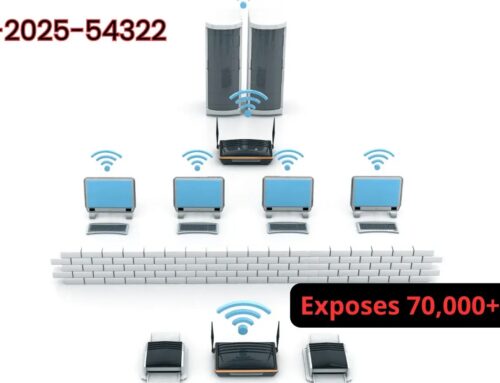
Unity Real-Time Development Platform Vulnerability Let Attackers Execute Arbitrary Code
Unity’s Critical Vulnerability: Understanding CVE-2025-59489 and its Impact
The digital landscape for developers just got a little more precarious. Unity Technologies, a titan in the real-time 3D development space, has issued a critical security advisory. This warning, aimed primarily at its vast developer community, highlights a severe vulnerability that could allow attackers to execute arbitrary code within applications built using specific versions of the Unity Editor. For anyone involved in game development, simulation, or interactive experiences powered by Unity, understanding this flaw, designated CVE-2025-59489, is paramount.
What is CVE-2025-59489? A Deep Dive into the Flaw
The vulnerability, tracked as CVE-2025-59489, exposes applications created with vulnerable Unity Editor versions to what are known as unsafe file loading attacks. Fundamentally, this means an attacker could craft malicious files that, when loaded by a vulnerable application, trick the system into executing unauthorized code. The ramifications are significant: local code execution and even privilege escalation across a multitude of operating systems are potential outcomes. This isn’t a theoretical threat; it represents a tangible pathway for malicious actors to gain control over a user’s system.
The core of this vulnerability lies in how certain Unity Editor versions handle file loading processes. A weakness in this mechanism allows for the injection of malicious code, bypassing intended security checks. This oversight could be exploited by an attacker to run arbitrary commands, access sensitive data, or even install further malware.
Who is Affected? Identifying Vulnerable Unity Editor Versions
While the initial advisory from Unity Technologies doesn’t explicitly list all affected versions in public statements, it’s crucial for developers to consult official Unity security advisories and release notes directly. Typically, such critical vulnerabilities often impact a range of older versions and potentially some newer ones until a patch is released. Developers should prioritize checking any projects built with Unity Editor for compatibility with the latest security updates. This vulnerability’s impact spans across various operating systems, meaning developers targeting Windows, macOS, or Linux, and by extension, their users, could be at risk.
The Threat of Local Code Execution and Privilege Escalation
The terms local code execution and privilege escalation are significant in cybersecurity. Here’s why they’re so concerning in the context of CVE-2025-59489:
- Local Code Execution: This capability allows an attacker to run their own malicious code on the victim’s device. Imagine playing a game or using an application built with a vulnerable Unity Editor, and unknowingly, malicious software is installed on your computer. This code could steal data, encrypt files for ransomware, or even turn your machine into part of a botnet.
- Privilege Escalation: Often, when initial code execution occurs, it’s under the user’s normal permissions. Privilege escalation means the attacker can then gain higher-level access, often administrative or “root” privileges. With elevated privileges, an attacker has virtually unrestricted control over the affected system, making system-level changes, installing rootkits, or permanently compromising the device.
Remediation Actions: Securing Your Unity Projects and Systems
For developers, studios, and anyone using Unity-powered applications, immediate action is necessary to mitigate the risks associated with CVE-2025-59489. Here’s an actionable advice:
- Update Your Unity Editor: The most critical step is to upgrade your Unity Editor to the latest secure version released by Unity Technologies. Always consult their official security advisories and release notes for patch information.
- Educate Your Users: If you distribute applications built with Unity, inform your users about the potential risks and encourage them to update to the latest versions of your software as soon as you release a fix.
- Implement Secure Development Practices: Review your development pipeline. Ensure that all external libraries and assets are vetted for security vulnerabilities. Adopt a “least privilege” approach for all application components and user interactions.
- Stay Informed: Regularly monitor Unity’s official security announcements, blogs, and forums for updates regarding this and other potential vulnerabilities.
- Network Security: While CVE-2025-59489 is primarily a local execution vulnerability, robust network security, including firewalls and intrusion detection systems, can still play a role in preventing an attacker from establishing outward communication from a compromised system.
Tools for Detection and Mitigation
While the primary mitigation for this specific vulnerability is updating the Unity Editor itself, various cybersecurity tools can aid in general application security posture and vulnerability management.
| Tool Name | Purpose | Link |
|---|---|---|
| Software Composition Analysis (SCA) Tools | Identify vulnerabilities in third-party libraries and dependencies used in Unity projects. (e.g., Black Duck, Snyk) | Synopsys Black Duck, Snyk |
| Static Application Security Testing (SAST) Tools | Analyze source code for security vulnerabilities during the development phase. | Checkmarx SAST, SonarQube |
| Endpoint Detection and Response (EDR) Solutions | Monitor user endpoints and respond to threats like unauthorized code execution in real-time. | CrowdStrike Falcon Insight, Microsoft Defender for Endpoint |
| Vulnerability Scanners | Identify known vulnerabilities in software and operating systems on systems where Unity applications run. | Qualys VMDR, Tenable Nessus |
Key Takeaways for a Secure Development Future
The disclosure of CVE-2025-59489 underscores the constant need for vigilance in software development. For Unity developers, the immediate priority is to update the Unity Editor to patched versions as soon as they become available. Beyond this specific fix, embracing a security-first mindset throughout the development lifecycle is crucial. Regularly auditing dependencies, employing robust security tools, and staying informed about the latest threats are not just best practices – they are essential safeguards against vulnerabilities that could compromise both developer and user systems. The integrity of your projects and the trust of your users depend on proactive security measures.





